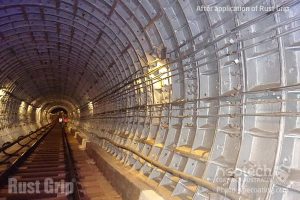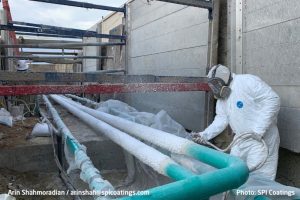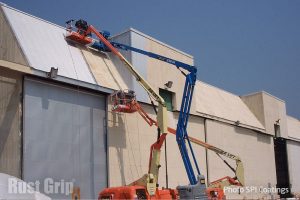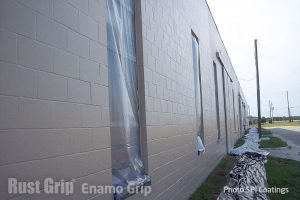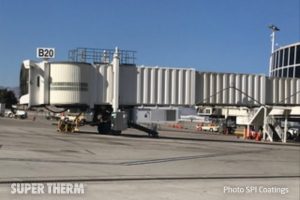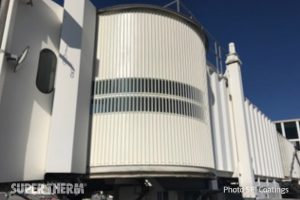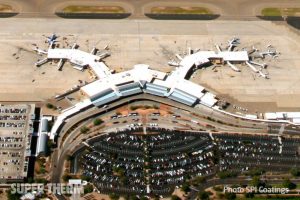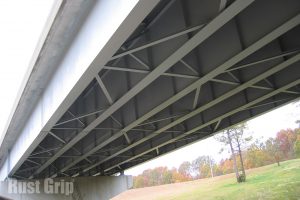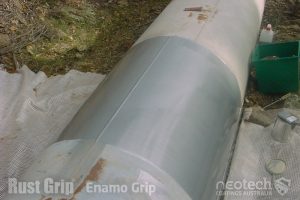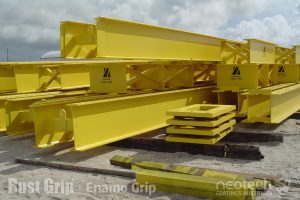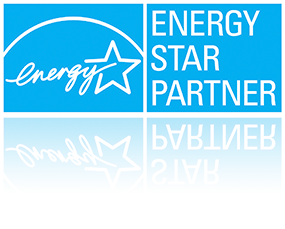Infrastructure
Protecting the world’s infrastructure from heat and corrosion is crucial due to the country’s unique climate and environmental conditions. High temperatures and coastal environments can accelerate corrosion and heat stress in materials, leading to premature degradation. This can compromise the integrity and functionality of critical infrastructure, impacting industries such as defence, energy, oil & gas and government assets.
Effective protection against these elements helps extend the lifespan of infrastructure, reduce maintenance costs, and enhance safety. Moreover, it supports sustainability goals by minimising resource wastage and reducing the need for frequent replacements or repairs. For businesses and consumers alike, this translates into significant cost savings and contributes to a more resilient economy.
Heat Protection for Infrastructure
Protecting assets from heat is essential for several reasons, particularly when considering the impacts of both solar heat gain and heat loss in industrial and commercial settings.
- Energy Efficiency: By shielding assets from excessive solar heat, coatings like Super Therm® can significantly reduce the need for air conditioning and cooling systems. This leads to lower energy consumption, which is both cost-effective and better for the environment. Conversely, insulating coatings like HPC® Coating prevent heat from escaping from pipes and other infrastructure, ensuring energy is used more efficiently, reducing operational costs.
- Asset Longevity: Heat can accelerate the aging and degradation of materials, leading to cracks, warping, and other structural issues. Protective coatings like Rust Grip® can maintain the integrity of the asset, prolonging its useful life and reducing the need for costly repairs or replacements.
- Safety: Excessive heat can pose safety risks, especially where high temperatures can lead to equipment failure or increase the risk of burns and other injuries. Effective heat management through coatings ensures safer working conditions.
- Operational Consistency: Maintaining a controlled temperature is crucial for certain industrial processes. Protective coatings help ensure that temperatures stay within required parameters, which is vital for quality control and consistent operation.
Overall, using thermal insulation and protective coatings is a strategic approach that improves the durability and efficiency of assets while promoting safety and sustainability.
Corrosion Protection for Infrastructure
Corrosion protection is critical for maintaining the integrity and functionality of infrastructure across various industries. Here’s why it’s so important:
- Longevity and Durability: Corrosion can severely shorten the lifespan of infrastructure by weakening structural components. Protective coatings like Rust Grip® and Moist Metal Grip inhibit corrosion, extending the life of assets and reducing the frequency and cost of replacements.
- Safety: Corrosion can lead to structural failures, which pose serious safety risks, particularly in high-stakes environments like oil and gas facilities. By preventing corrosion, these coatings contribute to safer operational conditions.
- Cost Efficiency: The financial impact of corrosion includes not just potential failures or replacements, but also routine maintenance costs. Protective coatings reduce these expenses by shielding surfaces from corrosive elements, thus lowering overall maintenance costs.
- Operational Reliability: For industries that rely on continuous operation, unexpected downtime due to corrosion-related damage can lead to significant economic losses. Corrosion protection ensures that equipment remains functional and reliable, supporting uninterrupted operations.
- Environmental Protection: By preventing leaks and failures, especially in industries like oil and gas, effective corrosion protection helps minimize environmental risks and comply with regulatory standards for environmental conservation.
Utilising corrosion-resistant coatings like Rust Grip® is a strategic approach that offers both protective benefits and economic advantages, aligning with sustainability goals while ensuring the robustness and reliability of critical infrastructure.






